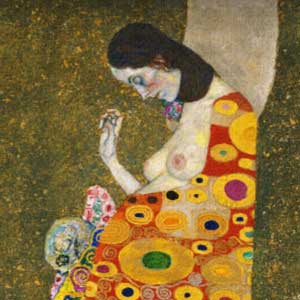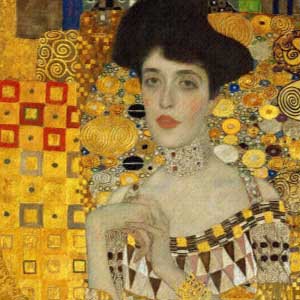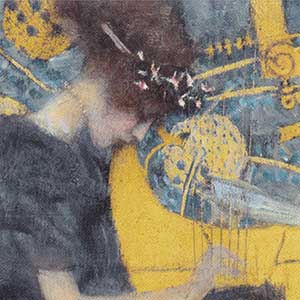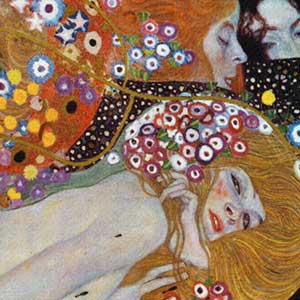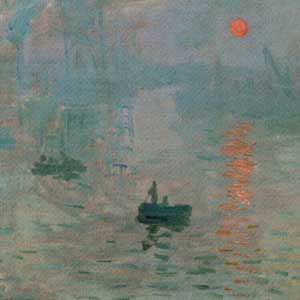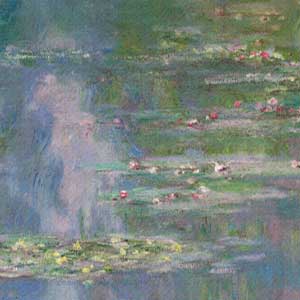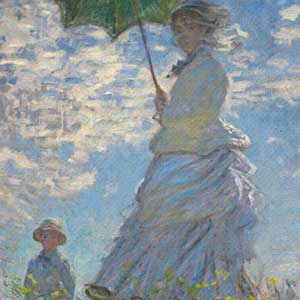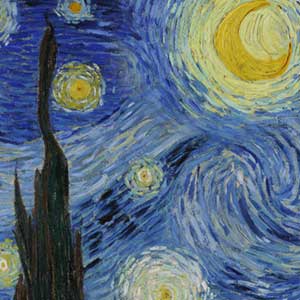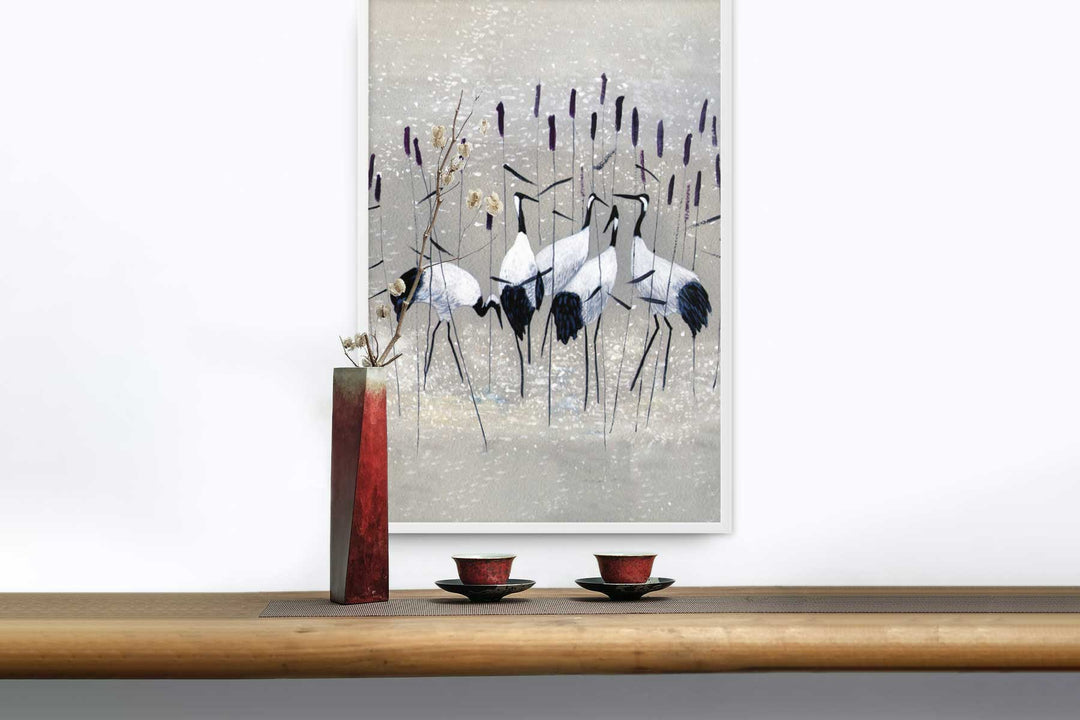The 20 Most Famous Painters: The Power of Art Throughout History
Art reflects the human experience, and throughout history certain painters have left an indelible mark on the canvas of time. From the incisive brushstrokes of the Renaissance to the bold experiments of modernism, these artists have contributed significantly to the way we perceive and appreciate the world around us. Let's take a fascinating journey through art history together as we list the 20 most famous painters of all time.
It should be noted that the selection of painters and their order are completely subjective. We invite you to take a look at the list and see if you agree with this assessment. Art is, after all, a personal experience, and the appreciation of these masterpieces can vary from person to person.
20. Gustav Klimt (1862-1918)

Austrian symbolist Gustav Klimt opens our list at number 20. Klimt is known for his ornamental and decorative style, particularly evident in masterpieces such as "The Kiss" and "The Tree of Life." His art captures the elegance of fin de siècle Vienna and stands out for its unique expression of sensuality and symbolism.
Reprints of Gustav Klimt at artlia
 |
19. Raffaello Sanzio da Urbino (1483-1520)

Italian Renaissance master Raffaello, better known as Raphael, secures 19th place. His harmonious compositions, including the iconic "The School of Athens", embody the ideals of the High Renaissance. Raphael's works are characterized by perfection and clarity, and his influence spans centuries, inspiring subsequent generations of artists.
18. Diego Velázquez (1599-1660)

Spanish Baroque painter Diego Velázquez takes 18th place with his captivating realism and masterful handling of light and shadow. Velázquez's " Las Meninas " is a masterpiece of composition and a prime example of his ability to capture spatial depth and intimacy in his paintings.
Reprints by Diego Velázquez at artlia
 |
 |
17. Caravaggio (1571-1610)

At number 17 is the revolutionary Italian Baroque artist Caravaggio. Michelangelo Merisi, also Michael Angelo Merigi, called "Caravaggio" for short after the place of origin of his parents Caravaggio in Lombardy. His dramatic use of light and shadow in works such as The Calling of Matthew revolutionized the 17th century art world. Caravaggio's realistic approach and intimate depiction of biblical scenes had a lasting impact on the Baroque movement.
16. Jackson Pollock (1912-1956)

In the field of abstract expressionism, the American painter Jackson Pollock secured 16th place. Pollock's innovative technique of drip painting, as seen in works such as "No. 5, 1948," pushed the boundaries of traditional art forms. His works are an expression of chaos and freedom that capture the spirit of the post-war period.
15. Titian (ca. 1488-1576)

The Venetian Renaissance master Titian takes 15th place. Titian's ability to capture mythological tales with unparalleled beauty in works such as Bacchus and Ariadne reflects his masterful use of color and sensory imagery. His influence extends beyond the Renaissance to Baroque art.
14. Paul Cézanne (1839-1906)

The French post-impressionist Paul Cézanne secures 14th place. Cézanne is often considered a forerunner of Cubism, and his innovative approach to form and perspective is clearly evident in works such as "Mont Sainte-Victoire." His contribution to the development of modern art is invaluable.
13. Henri Matisse (1869-1954)

At number 13 we find French artist Henri Matisse , a leading figure of Fauvism. Matisse's bold use of color and innovative approach to form are evident in masterpieces such as "The Dance" and "The Red Studio." Matisse's works demonstrate a creative force that challenged tradition and blazed new trails in art.
12. Frida Kahlo (1907-1954)

Mexican painter Frida Kahlo secures 12th place with her surreal and symbolic self-portraits. "The Two Fridas" is a touching example of Kahlo's ability to weave personal and cultural narratives. Her works are marked by pain, passion and a unique feminist perspective that enriches the art world.
Reprints of Frida Kahlo at artlia
 |
11. Edgar Degas (1834-1917)

French impressionist Edgar Degas takes 11th place. Degas' depictions of ballet dancers and racehorses, such as in "The Ballet Lesson," capture movement with exquisite detail. His contribution to the depiction of the human body in motion shaped the art of Impressionism.
10. Salvador Dalí (1904-1989)

We make it into the top 10 with the eccentric Salvador Dalí, a key figure in the Surrealist movement. Dalí's melting clocks in The Persistence of Memory and his explorations of the subconscious have left an indelible mark on art history. His unique perspective on reality and dreams shaped the surrealist genre.
9. Georgia O'Keeffe (1887-1986)

American modernist Georgia O'Keeffe secures the 9th spot on our list. O'Keeffe is known for her large-scale floral paintings and her depictions of New York skyscrapers. Her work symbolizes a unique blend of abstraction and representation that transcends its time.
8. Edvard Munch (1863-1944)

Norwegian painter Edvard Munch ranks 8th. Best known for his iconic work " The Scream ," Munch's contribution to expressionism and his exploration of existential themes has left a lasting impression on the art world. His introspective depictions of emotions have influenced a wide range of artists.
7. Johannes Vermeer (1632-1675)

17th century Dutch master Johannes Vermeer takes 7th place. Vermeer is famous for his exquisite depictions of domestic life, such as " Girl with a Pearl Earring " and "The Milkmaid". His unparalleled skill in capturing light and texture made Vermeer one of the outstanding artists of the Baroque period.
6. Rembrandt van Rijn (1606-1669)

The Dutch painter Rembrandt van Rijn secured 6th place. A master of portraiture and chiaroscuro, Rembrandt's "The Night Watch" showcases his ability to bring depth and emotion to his subjects. His innovative use of light and shadow had a decisive influence on the art of the 17th century.
5. Claude Monet (1840-1926)

One of the pioneers of Impressionism, Claude Monet takes 5th place on our list. Monet's dedication to capturing the fleeting effects of light and atmosphere is evident in masterpieces such as " Water Lilies " and "Haystacks." Monet's depictions of nature inspired an entire movement and paved the way for modern art.
Reprints of Claude Monet at artlia
4. Pablo Picasso (1881-1973)

Cubist innovator Pablo Picasso takes 4th place. A co-founder of the Cubism movement, Picasso's artistic evolution from the Blue and Rose periods to the groundbreaking works " Les Demoiselles d'Avignon " and "Guernica" mark him as a titan of 20th century art. Picasso's multidimensional approach to art revolutionized the understanding of form and space.
3. Vincent van Gogh (1853-1890)

Tormented genius Vincent van Gogh takes 3rd place. Van Gogh's expressive and colorful works, including "Starry Night" and "Sunflowers," have left an indelible mark on the art world that transcends the confines of his tragic life. Van Gogh's unique expression of emotion and his connection to nature have made him an icon in art history.
Reprints of Vincent van Gogh at artlia
 |
 |
|
2. Michelangelo Buonarroti (1475-1564)

In the penultimate place we find the Renaissance polyhistor Michelangelo Buonarroti. Known for monumental sculptures such as "David" and the impressive frescoes in the Sistine Chapel, Michelangelo's influence on art and culture is almost unmeasurable. His genius spanned the fields of sculpture, painting and architecture, and his legacy continues to shape notions of artistic greatness.
1. Leonardo da Vinci (1452-1519)

Taking the top spot on our list is the quintessential Renaissance man: Leonardo da Vinci. His mastery in various fields, from painting (embodied by the enigmatic " Mona Lisa " and the iconic "The Last Supper") to anatomy and engineering, cements Leonardo's status as the epitome of artistic genius. Da Vinci's ability to unite art and science remains an unmatched feat in the history of creativity.
The Legacy of the Masters: A Look into the Future of Art
These 20 painters, spanning centuries and continents, have left a lasting legacy that has a lasting impact on the world of art. Their contributions have not only defined their respective eras, but have transcended time and influenced generations of artists and art lovers. As we celebrate the diversity of styles and movements these painters represent, we remember the rich panorama that represents the history of art. Art does not remain static; it is a living, evolving reflection of human creativity.







